Project Description
In this project, I used polarization of light to make a bunch of staring eyes and express the anxiety of being gazed at.
I was inspired by Ryo Kishi’s Breathing Frame. I liked his way of making the white background screen appear different colors through polarizing films. After more research and experiment, I found that the clear tapes can disturb the vibration direction of light. This results in different colors when the two polarizers overlap.
Therefore, through the change and contrast of the depth of the color, the effect of light flicker is presented.
I chose to overlap the eye patterns and make them “flicker” at different frequencies through different polarizers. Create a stronger visual effect.
Perspective and Context
At first, I tried to use natural light as the background, which uses a wider space as the light source. But I changed it to a square and used the light strip to light it up. The range of Spaces is smaller, but the light from the strip makes the changes in these patterns much more powerful than the effects of my experiments in natural light Spaces. So unlike the project for midterm, I didn’t light up a larger space but focused the light on a smaller space to make the audience’s attention more concentrated.
Development & Technical Implementation
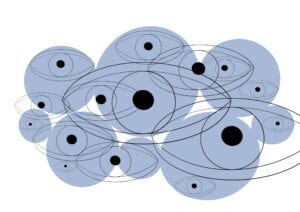
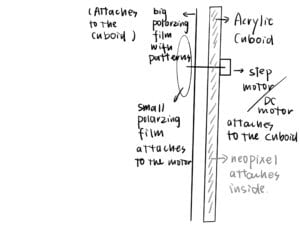
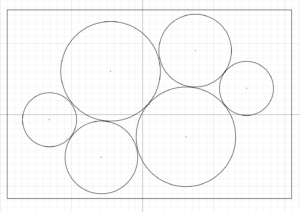
For the eye pattern, I designed different sizes and overlapped them slightly. To simplify the picture, I reduced some circular polarizers in the draft and designed symmetrical graphics. I attached a complete polarizer to an acrylic plate and then attached a pattern cut out of clear tape as the bottom layer
For the mechanical assembly, I attached the lamp strip to a thin box. Attach servo to the back of the box, and I 3d printed a shaft to go through the box. With Eric’s help, I used a magnet to pull the circular polarizer in the shaft of the servo.
For the composition, I made the strip fade at the beginning. The whole process of the composition for the servo is to Rotate slowly to fast, and then slowly to fast to a random angle.
Presentation
To my surprise, in the class presentation, Angy liked the crimp of the polarizer. At the same time, We had different opinions about whether I should hide the pixel of the strip or not.
I guess because I’ve already shown the polarizing film in the proposal, we didn’t talk too much about the principle of light polarization. But in the IMA show, I found that most of the audience was curious about where the patterns come from.
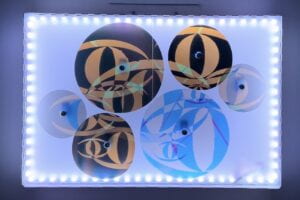
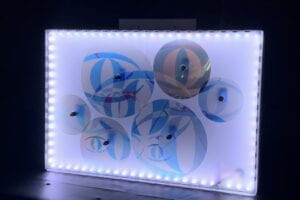
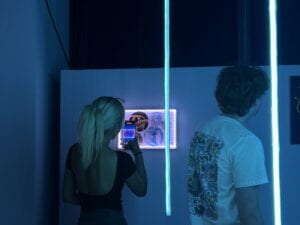
Conclusion
In this project, I realized that a few variations on the principles of light could achieve effects that could not be achieved with light sources alone. Compared with the midterm project, a more complete and refined shape design allows me to set up more easily. To make it better, I think I can improve the strip to make it less obvious.